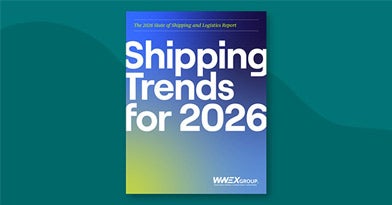Making Sense of Freight Shipping Documentation
It can’t be helped: freight shipping involves a pile of paperwork. While all of this documentation may seem confusing or even overwhelming, there are very good reasons for it. Proper less-than-truckload (LTL) freight and international shipping documentation ensures every party involved — from the shipper to the carrier to the recipient — is informed and protected. Documentation keeps things in order before and during the shipment, and is vitally important if there are any issues (such as damage or loss) that need resolution after delivery.
To help you wrap your head around all this paperwork, we’ve put together a list of some of the most common LTL and international freight documentation that freight shippers need to be familiar with.
Common LTL Freight Shipping Documents
Bill of Lading (BOL)
One of the most essential freight documents is the BOL. It serves as a contract between the carrier and shipper and lays out the key details of the freight being shipped.
There are several types of BOLs, but they usually contain:
- The carrier name and driver’s signature
- The date on which goods are to be shipped
- A detailed description of the goods being shipped (value, size, freight class, etc.)
- The names and addresses of the shipper and receiver
- Any special instructions the carrier needs to know
Freight Invoice
The freight invoice — also known as a freight bill — is similar to a BOL in many respects. The purpose of a freight invoice is to outline the total shipping charges, review any additional freight shipping fees and add clarity to information that may be found on the BOL. These serve as a valuable tool for the accounting side of the shipping process — especially when you’re dealing with disputes.
Commercial Invoice
If a freight shipment involves the import or export of goods, it needs to include a proof of sale called a commercial invoice. This document is issued from the seller to the buyer and contains details used for customs clearance to assess the duties and taxes that are due.
Inspection Certificate
This certifies that the goods in a freight shipment have been inspected and conform with the terms laid out in the BOL. Not all freight shipments require an inspection certificate, but specific goods such as perishable items and industrial equipment will need this document.
Proof of Delivery (POD)
This document is signed and distributed by the recipient as confirmation that their freight shipment has been successfully received and without noticeable damage. The proof of delivery usually contains the date and time of delivery, name and title of the recipient, and a list of the items in the shipment.
Common International Freight Shipping Documents
Certificate of Origin (CO)
Another vital document for international freight shipping, the certificate of origin identifies the country where the goods being shipped were made. This document is prepared by the exporter or manufacturer, and must be certified by a government authority such as a consulate or chamber of commerce.
Packing List
This is a mandatory document for ocean freight shipments (but it’s also a good idea to include with your everyday freight shipments, too!), and lists out the properties of the freight in minute detail, including weight, volume and the value of the individual boxes that make up the shipment. The packing list ensures that the carrier, importer, freight forwarder and customs office are all fully apprised of the shipment’s contents without the need to physically verify everything.
Customs Invoice
This is a mandatory document used to declare the value of goods on a shipment in order for it to clear customs during cross-border and international shipping. Beyond its use as a clearance document, a customs invoice can also serve as a bill of sale on large-volume shipments.
Letter of Credit
A letter of credit is a primary means of payment for international trade transactions. This document is a promise by a bank on behalf of the consignee to the seller with a dollar amount in the agreed currency. Additionally, it includes information such as the description and quantity of goods.
Still trying to make sense of the diverse documents that are common in freight shipping? The pros at Unishippers have helped tens of thousands of small and mid-sized businesses (SMB) correctly fill out and complete all necessary freight shipping documentation. Reach out to Unishippers any time you need a freight quote, or just some help getting your docs in a row!


